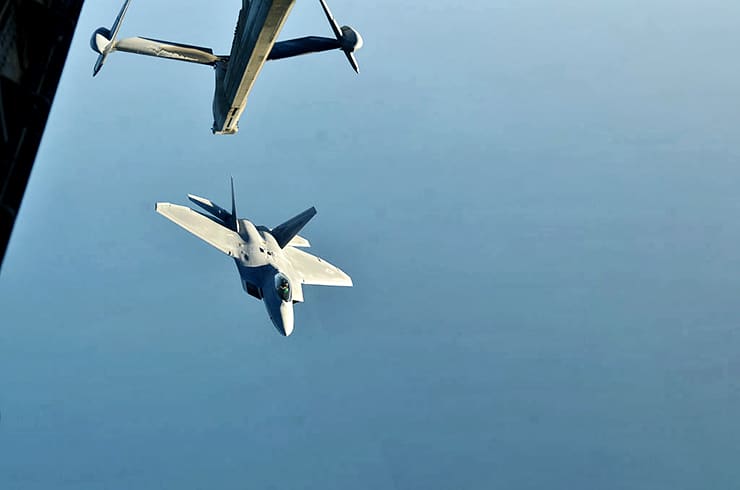By the end of fiscal year 2018, the cost to the United States of all post-9/11 wars will exceed $5.6 trillion, a new report finds.
The average American taxpayer has spent $23,386 on these wars since 2001, the report finds.
“The US wars in Iraq, Syria, Afghanistan, and Pakistan, and the increased spending on homeland security and the departments of defense, state and veterans affairs since the 9/11 attacks have cost more than $4.3 trillion in current dollars through fiscal year 2017,” says Neta Crawford, co-director of the Costs of War project and a professor of political science at Boston University.

“Adding likely costs for fiscal year 2018 and estimated future obligations for veterans’ care, the costs of war total more than $5.6 trillion.”
The Costs of War project, based at Brown University’s Watson Institute for International and Public Affairs, was launched in 2011 to document the costs of the post-9/11 wars in a comprehensive fashion.
This new report takes into account not only Department of Defense spending, but spending by the departments of state, veterans affairs, and homeland security, as well as the cost of interest paid to date on the money the US has borrowed to pay for the wars.
The Pentagon accounting of war costs does not include these areas of spending, the researchers say, so many of the wars’ budgetary burdens, from the cost of providing medical care and disability payments to veterans to the cost of missions related to preventing and responding to terrorist threats, go unacknowledged in Pentagon estimates.
For example, the report “Estimated Cost to Each Taxpayer for the Wars in Afghanistan, Iraq, and Syria” calculates the total authorized spending for wars in those regions as $1.52 trillion and identifies the average taxpayer’s individual burden to date as $7,740 because it only counts Department of Defense spending.
“The American public should know what the true costs of these choices are and what lost opportunities they represent,” says Catherine Lutz, project co-director and a professor of international studies and anthropology at Brown University. “Given that the current administration has announced more years of war in Afghanistan and elsewhere, this total will only grow.”
Underestimating costs
“Optimistic assumptions and a tendency to underestimate and undercount war costs have, from the beginning, been characteristic of most estimates of the budgetary costs and the fiscal consequences of these wars,” Crawford writes in the study.
The new report explains how and why Crawford did not focus narrowly on one department, such as the Department of Defense, but included all war zone and war-related spending by federal departments and agencies, including the cost of interest after the US went into deficit spending.
The Costs of War report includes war-related spending by the State Department, for example, because special appropriations for war go directly to the Department of Defense and State Department and the US Agency for International Development, Crawford notes.
The report considers Department of Veterans Affairs spending because “the full budgetary burden of the wars also includes the costs of providing medical care and disability payments to the many veterans of these wars through the V.A. and Social Security Administration,” Crawford writes.

And because spending on post-9/11 wars involves Homeland Security missions related to preventing and responding to potential terrorist attacks, that spending is also included in the Costs of War Project accounting. Homeland Security spending increased by more than $500 billion since 2001, Crawford writes.
“Although this report’s accounting is comprehensive, there are still billions of dollars not included in its estimate.”
Crawford also adds interest to the total, because the wars have largely been paid for by borrowing and supplemental appropriations, rather than by increasing taxes, making cuts elsewhere, or selling large numbers of war bonds. Future interest payments on borrowing for the wars will likely add more than $7.9 trillion to the national debt, the report states.
For 16 years, rather than incorporating wartime budgets into regular defense appropriations, the wars have been paid for by supplemental appropriations, the study notes. This is a departure from standard budgetary practice, and the emergency and overseas contingency operations bills used to pay for the wars are exempt from spending caps and do not require offsetting cuts elsewhere in the budget.
“Future interest costs for overseas contingency operations spending alone are projected to add more than $1 trillion to the national debt by 2023,” Crawford writes.
Even if the US ceased all spending on the wars right now, cumulative interest costs on borrowing would ultimately add more than $7.9 trillion to the national debt over the next several decades, Crawford notes.
“Thus, even if military spending plateaus, interest costs will far surpass total war costs unless Congress devises another plan to pay for the wars, for instance by selling war bonds or increasing taxes.”
Taking care of veterans
Each year, as these wars continue, tens of thousands of new veterans become eligible for health care and disability payments from the VA, Crawford writes, and total costs for post-9/11 war veterans will increase over time.
“For every war,” she writes, “peak spending on veterans’ disability and medical care occurs decades after their service ends. For instance, the costs for WWI veterans peaked in 1969, and for WWII veterans in 1986. Costs for the care of Vietnam War veterans have not yet peaked.”
The health care costs of active duty soldiers are on the rise as well, as many who have been injured remain in service. 16 percent of those who lose a major limb return to active duty. Disability costs for veterans are also growing, with tens of thousands of new veterans receiving disability payments from the VA.
For creating jobs, spending on schools beats military
Crawford says that even as the cost of the wars grows, spending on homeland security and Pentagon missions is not as transparent as it could be, and that the Homeland Security budget is no longer explained by the Office of Management and Budget.
“The Pentagon’s areas of global war on terror operations have enlarged significantly but are not always clearly enumerated in its public summaries of their activities,” Crawford says.
This lack of transparency, Lutz argues, is problematic: “it erodes accountability for the dollars spent as well as public confidence that decision-making about where and how long to go to war can be genuinely democratic.”
Unaccounted-for costs
While the Costs of War project incorporates war spending in key areas of the federal budget, as well as the interest accumulated on borrowed money, this accounting still does not include every expenditure.
“Although this report’s accounting is comprehensive, there are still billions of dollars not included in its estimate,” Crawford says. “For example, the report’s total does not include the substantial costs of war to state and local governments—most significantly, the costs of caring for veterans—or the millions of dollars in excess military equipment the US donates to countries in and near the war zones.”
Furthermore, the $5.6 trillion figure does not include the money the US commits to operations in the Horn of Africa, Uganda, Trans-Sahara, the Caribbean, and Central America as part of Operation Enduring Freedom. Nor does it tally spending through the Department of Defense European Reassurance Initiative meant to deter Russia; money for Operation Odyssey Lightning, which paid for airstrikes against ISIS in Libya beginning in 2016; or US counterterrorism activities taking place in dozens of countries across the world.
After combat, veterans need help getting back to ‘normal’
Therefore, Crawford writes, while her estimate is far higher than the Pentagon’s, it is conservative and could even be low if the US continues the wars over many more years.
The projected interest costs could change, she notes, if the US chooses to change the way it pays for the wars.
“As these wars, the longest in US history, have been institutionalized, it will become increasingly difficult to disentangle the parts of the base Pentagon budget that are actually war-related costs and what parts of the special overseas contingency operations appropriations are better considered budget costs.”
Source: Brown University



